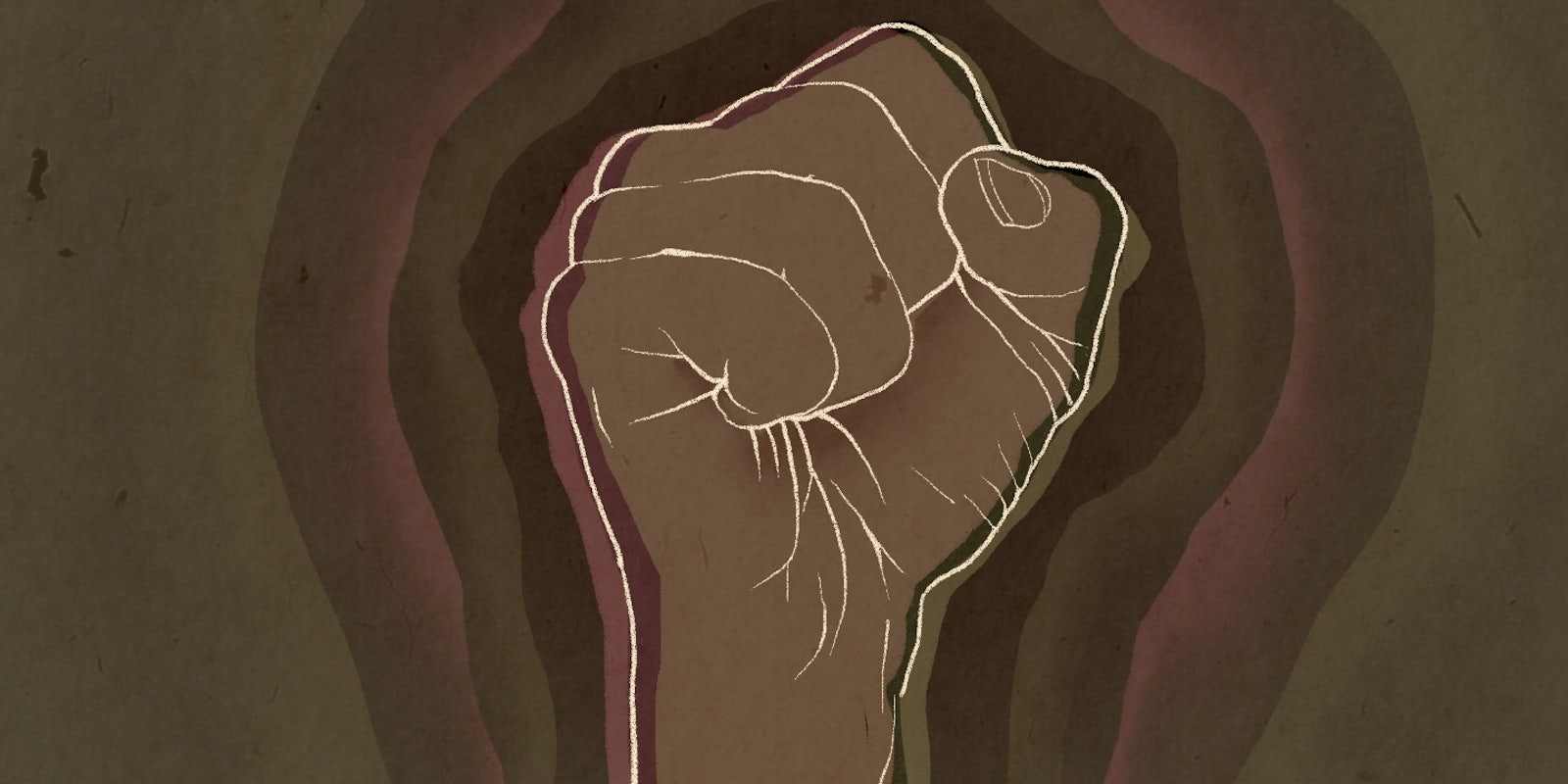February isn’t just a celebration for Black History Month anymore. This year Black Lives Matter took proceedings a step further and participants imagined the future of African-Americans with a master class in art and writing.
Tanya Lucia Bernard, 32, arts and culture director at Black Lives Matter (BLM), and Darnell L. Moore, 40, organizer at BLM, spent the past 29 days coordinating Black Futures Month.
Bernard referred to the celebration as, “a month-long exercise in dreaming,” before elaborating: “Inspired by the artwork and articles produced by writers and artists across the U.S., we can more easily imagine what world we want to collectively create while staying grounded in our current movement moment.”
#BlackFuturesMonth uses creative expression to visualize & discuss issues that impact Black communities like labor & reproductive justice.
— Black Lives Matter (@Blklivesmatter) February 1, 2016
Now that Black Futures Month is coming to a close, the co-organizers spoke with the Daily Dot about the impact of their undertaking—while touting the greatest hits.
Moore said the month helped BLM arrive at a “set of inspirational principles that can ground the work that we do moving forward and [offer a] more clear vision of what a black love and liberatory future can look like.”
During the month, the BLM network produced work published on the Huffington Post’s Black Voices and used the #BlackFutureMonth hashtag—without the s—as part of its social media campaign. However, the overall project is called Black Futures Month, due to organizers noting that there isn’t just one “black future”—it’s plural, which is something BLM expressed in the art and writing.
Bernard said the followers of the hashtag were so inspired by the posters that many of them clamored for prints, “so we’re currently trying to find a way to make that happen.”
Furthermore, Moore believes the project brought writers together into these conversations and developed communities of artists, all of which connected art with writing.
“Beyond that, [the project invited those] who may or may not be invited into movement work and politics… particularly as it relates to queer issues, trans issues, issues relevant to black women, the working class, [and] the labor force,” Moore said.
Tiffany Lenoi Jones, 32, an artist and arts educator, was inspired to create two pieces of art for the month-long celebration. “The beautiful thing that I’ve seen happen this particular Black Futures Month is… our power as a group of people,” she said. “The future we want is happening, and I’m experiencing it.”
Her first piece focuses on “healing justice,” artwork that she carries close to her heart as she reflected on her “socially conscious” loved ones within a four-generational family tree—while members of her family experienced trauma through slavery, Jim Crow, other forms of violence.
Jones said the art also symbolizes she and her sister not holding onto that pain and self-sacrificing, and being healers. With generations of sacrifice and pain behind her, the little girl in it is holding a butterfly—representing the next generation.
Yesterdays #BlackFuturesMonth poster by Tiffany Jones & article by Mark-Anthony Johnson https://t.co/EkotUx2O3j pic.twitter.com/Sx4iHaXJlw
— Black Lives Matter (@Blklivesmatter) February 7, 2016
Her second piece produced for Black Futures Month explored grandparents who experienced domestic violence. Even with the pain her family endured, both pieces represent how her loved ones still managed to love.
#BlackFutureMonth uplifts survivors of DV. Artwork: Tiffany Jones, Article: @YoloAkili: https://t.co/IRtzE3VGn3 pic.twitter.com/cyS1vQ84Xp
— Black Lives Matter (@Blklivesmatter) February 19, 2016
“I become quite aware of the destructive nature of ignoring, not acknowledging or not calling out, the trauma that is produced from living under siege consistently and how that really impacts our ability to even have a voice,” Jones said.
Bernard acknowledged artist Ethan Parker‘s “Self-Made” piece that focused on black transgender people as her favorite.
“The complexity of the piece, from the two-spiritedness of the character, to the reprogramming of the DNA, and the connection to spirit through the third eye, uplifts trans folks in a way that we don’t often see,” Bernard said. “In American-Indian culture, queer and trans folks are seen as spiritually gifted and are often asked to help lead their community. In Ethan’s poster, the explosion of trans excellence that radiates throughout the piece is antidotal.”
Moore said he doesn’t want to get in trouble for picking out any favorites, but acknowledged the brilliant writings of Jamal T. Lewis who wrote about black body images with, “There Is Freedom in the Water,” and Elle Hearns and Treva B. Lindsey‘s dialogue about both black cisgender and transgender women standing united with, “Sister to Sister: Black Women Solidarity.”
Yet, producing such a larger project can have its challenges. For example, he wanted to ensure there was space for everyone to not think alike, but be themselves, provide different perspectives, and create.
Time was a major challenge for both co-organizers. “You have people who are trying to eat, feed themselves, live and fight, and in the midst of that, trying to create space to dream, imagine, write, and create art—and they did it,” Moore said.
“As an artist myself, I know that the creativity bug doesn’t always respect our wishes,” Bernard wrote. “Oftentimes, producing art with a deadline looming can extinguish the creative embers. There were days where we had to switch around topics because we didn’t have finished artwork in on time. That said, it was always worth the wait in the end.”
Challenges aside, Bernard said Black Lives Matter had more time to produce the project this year, but the experiences from last year helped. Yet, the work isn’t done—Black Lives Matter will continue to outline its political future and Black Futures Month is a project the arts and culture director hopes to continue.
“Hopefully, in the future, we can expand the project through collaborations with other groups and organizations,” Bernard said. “Additionally, we’d love to release the themes in advance next year and ask the larger community to submit their own artwork on each topic.”
Illustration via Max Fleishman


